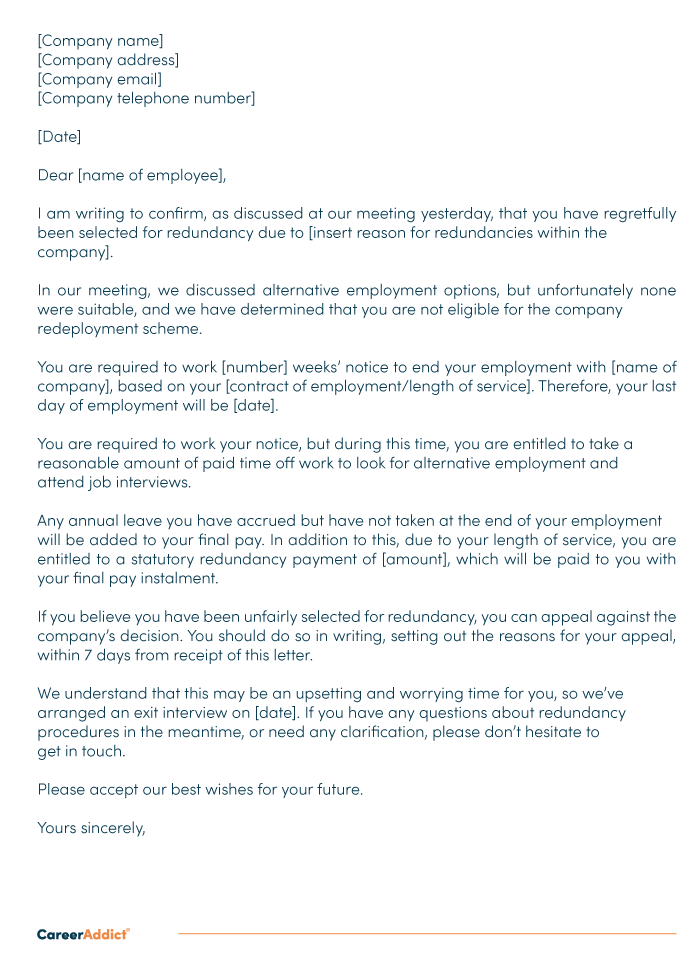Unboxing the Strategies for Mitigating Company Redundancy and Enhancing Organizational Durability
In today's vibrant business landscape, the capacity of companies to browse uncertainties and obstacles is vital for long-lasting sustainability. Mitigating firm redundancy and enhancing organizational resilience have actually ended up being centerpieces for leaders aiming to adjust and prosper in an ever-evolving market. By delving into the complexities of calculated planning, labor force optimization, and technical integration, firms can not only improve their procedures yet likewise strengthen their structures to stand up to unanticipated disturbances. As we discover the complex approaches used by forward-thinking companies, a deeper insight emerges right into the proactive measures crucial for cultivating agility and determination despite modification.
Assessing Current Organizational Redundancies
To properly examine current organizational redundancies within a firm, a comprehensive review of the existing processes, responsibilities, and duties is crucial. if a company goes bust who pays redundancy. By carrying out an extensive examination of the numerous features and jobs accomplished within the company, management can recognize locations where replication of efforts or inadequacies exist. This assessment must not just focus on specific job functions yet also consider just how various departments collaborate and communicate
One strategy to assessing redundancies is to examine work descriptions and responsibilities to pinpoint any type of overlaps or voids in responsibilities. Additionally, evaluating the process and communication networks can disclose bottlenecks or unnecessary steps in processes. It is essential to entail employees whatsoever levels during this assessment to get insights from those directly associated with daily procedures.

Executing Agile Workforce Approaches
Complying with a detailed assessment of current organizational redundancies, the application of agile workforce approaches ends up being vital for maximizing operational efficiency and versatility. Dexterous workforce methods entail creating a dynamic and adaptable job environment where workers can swiftly adjust to changing company requirements. One vital aspect of carrying out dexterous workforce methods is cultivating a culture of continuous discovering and growth. This entails offering workers with the essential devices, sources, and training to acquire new skills and expertises. Furthermore, companies can boost dexterity by advertising cross-functional groups that can conveniently collaborate and shift emphasis based upon priority jobs.
One more vital element of agile labor force approaches is promoting clear interaction and encouraging workers to choose autonomously within their roles. By decentralizing decision-making processes, companies can react much more efficiently to challenges and possibilities. Additionally, taking on nimble project monitoring methods, such as Scrum or Kanban, can enhance and streamline operations efficiency. Overall, implementing agile labor force techniques can aid firms stay affordable in today's swiftly evolving company landscape.
Leveraging Technology for Effectiveness
Leveraging innovative technical solutions can considerably boost functional efficiency within organizations seeking to streamline processes and maximize source utilization. By integrating automation tools, fabricated intelligence, and data analytics, business can improve operations, lower manual errors, and make data-driven decisions immediately. Automation can handle recurring tasks, allowing workers to focus on even more calculated campaigns, thereby improving efficiency and technology.
In addition, the implementation of cloud computing solutions makes it possible for seamless collaboration among employee, no matter their physical place. Look At This This promotes communication, improves project management, and improves overall performance. Additionally, utilizing customer partnership management (CRM) software program can aid businesses better recognize their consumers' demands, customize interactions, and ultimately boost customer contentment and commitment.

Urging Constant Learning and Advancement
Applying a society of constant understanding and development is necessary for fostering growth and flexibility within a dynamic business environment. Motivating staff members to participate in continuous understanding opportunities not only improves their individual skills yet additionally adds to the general durability of the firm. By prioritizing continual knowing, companies can stay abreast of sector fads, adapt to technical developments, and remain competitive on the market.
To successfully motivate continuous discovering and growth, business can establish understanding and development programs, provide opportunities for upskilling and reskilling, give access to online courses and sources, and develop a helpful learning setting. Supervisors play a crucial function in promoting a culture of learning by leading by example, providing feedback and training, and recognizing and compensating workers' learning achievements.
Structure a Durable Corporate Society
Establishing a resistant business society is critical for organizations seeking to grow and navigate obstacles in an ever-evolving service landscape. A resistant business culture is identified by versatility, openness, open communication, and a solid sense of purpose. To construct such a society, leaders have to focus on fostering trust among staff members, urging partnership, and promoting a development attitude. Clear communication concerning business changes, obstacles, and successes is essential in developing a society where employees feel educated and valued. Furthermore, offering chances for specialist growth, acknowledging and compensating workers' payments, and promoting work-life balance are essential elements of a resistant business culture.
Leaders play a significant function fit the culture of a company. By leading by instance, showing resilience despite hardship, and proactively sustaining their teams, leaders can instill these values throughout the company. A resistant company culture not only aids firms stand up to challenges however likewise cultivates technology, enhances worker involvement, and inevitably adds to long-term organizational success.
Conclusion
In conclusion, the techniques for mitigating company redundancy and boosting business durability are vital for this page keeping competitiveness in today's dynamic my response business setting. By examining present redundancies, executing agile labor force approaches, leveraging innovation, encouraging continual discovering and advancement, and building a durable company culture, companies can adjust to change, boost effectiveness, and foster innovation. These aggressive actions will help business navigate obstacles, decrease interruptions, and guarantee lasting success in the ever-evolving industry.
Complying with an extensive assessment of present business redundancies, the application of nimble workforce methods becomes imperative for enhancing functional efficiency and flexibility - if a company goes bust who pays redundancy. In general, implementing active labor force techniques can aid companies stay affordable in today's rapidly advancing business landscape
A durable company culture not only aids companies endure obstacles but likewise promotes technology, enhances worker involvement, and inevitably adds to long-term business success.
